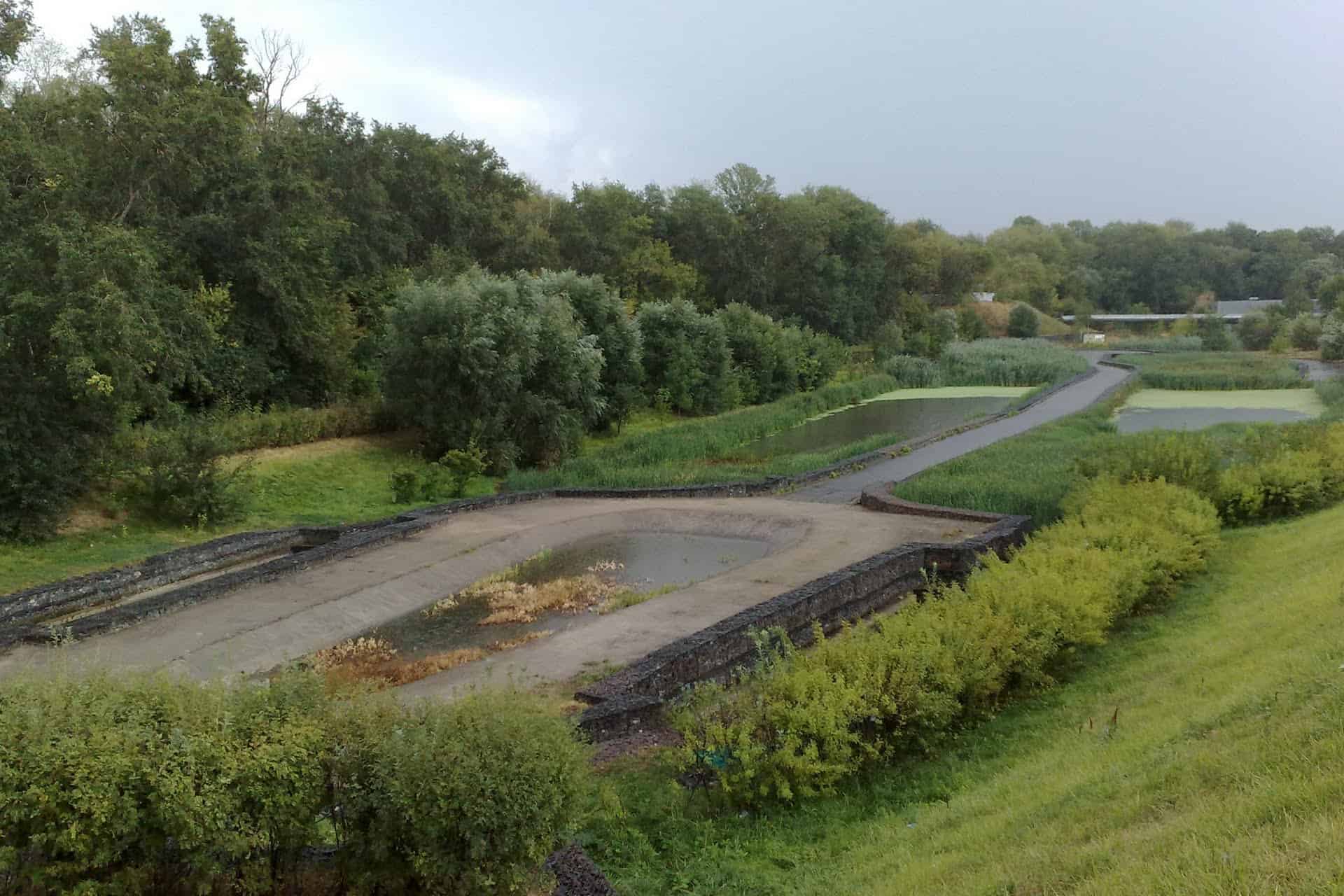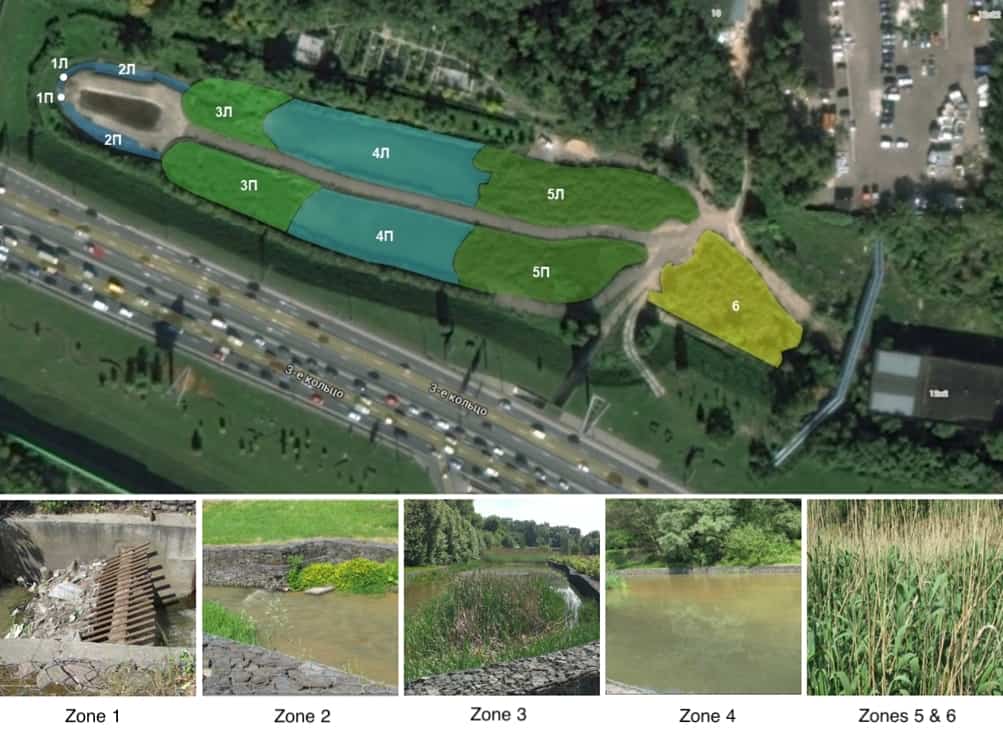Constructed Wetland in Moscow illustrates New Methods of Monitoring

Treatment facility monitoring is essential for environmental protection and successful operation of a facility. A team from Moscow State University has developed a new approach to monitor constructed wetlands (CW). The approach is based on functional zonation: outlining CW areas which have different medium conditions, processes and functions.
This approach was tested at a surface flow СW in Moscow city. This CW is used for the treatment of surface runoffs resulted from a small city river and diffused wastewater from the motorway.
Total area of the CW is 5,925 m2; the volume is 7,445 m3. Vegetation consists of reed-mace (Typha sp.) and cane (Phragmites sp.). Average water flow rate of the influent is 34,000 m3/day; average hydraulic retention time (HRT) is 6-7 hours, which is very little for such systems.
The CW has been divided into 6 functional zones:
- bar screens;
- grit chambers and zone of natural aeration;
- phytofilters;
- settling tank with biotanks;
- phyto-treatment;
- phyto pre-treatment.

Functional zones of the Constructed Wetland

Further research has shown that outlined zones differ in composition and structure of microbial community in water and bottom sediments, hence, in removal efficiency depending on various water parameters.
Thus, despite little hydraulic retention time CWs have distinct zonation differing in
- physical-chemical medium conditions;
- presence/absence and functionality of treatment processes;
- intensity of treatment processes.
This pattern can be used in construction of treatment facilities to monitor physical, chemical and microbiological treatment processes in CWs.
